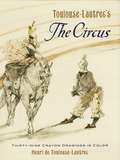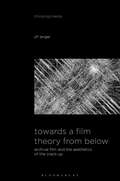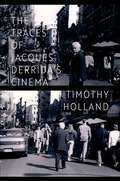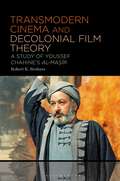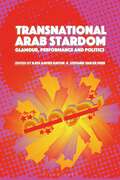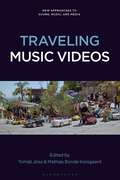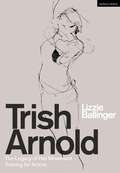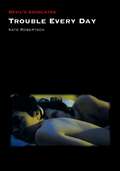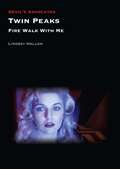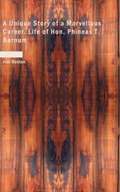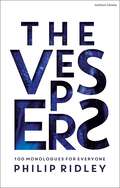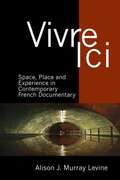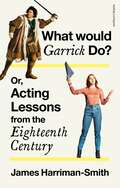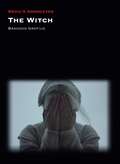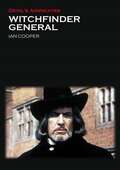- Table View
- List View
Tightrope walker (UEB Contracted)
This is an image of a tightrope walker standing on a rope strung between two towers and holding a long pole, which helps him balance. He is facing to the front so all his limbs are visible. There is a locator dot shown, which will be at the top left of the page when the image is the right way up. In the top centre of the page is the small image (about 5 cm high), of the tightrope walker. He is standing with his arms stretched out, holding his long pole extending to the left and right. His legs are straight and he has his feet on the wire rope, which is stretched between the towers on the left and right of the page. On the left and right of the page are two towers with a safety net, seen from the side, stretched between them. At the bottom of the page is the ground.
Tightrope walker (UEB uncontracted)
This is an image of a tightrope walker standing on a rope strung between two towers and holding a long pole, which helps him balance. He is facing to the front so all his limbs are visible. There is a locator dot shown, which will be at the top left of the page when the image is the right way up. In the top centre of the page is the small image (about 5 cm high), of the tightrope walker. He is standing with his arms stretched out, holding his long pole extending to the left and right. His legs are straight and he has his feet on the wire rope, which is stretched between the towers on the left and right of the page. On the left and right of the page are two towers with a safety net, seen from the side, stretched between them. At the bottom of the page is the ground.
Toulouse-Lautrec's The Circus: Thirty-Nine Crayon Drawings in Color (Dover Fine Art, History Of Art Series)
by Henri de Toulouse-LautrecA bareback rider's skirt ripples in the breeze, an acrobat bends his muscular limbs into a handstand, and a poodle obeys a clown brandishing a whip. The circus is in town! These kaleidoscopic visions from under the big top offer audiences a series of post-Impressionistic sideshows, courtesy of thirty-nine brilliant crayon drawings in the distinctive style of Toulouse-Lautrec.These scenes took place far from the artist's customary haunts, the bars and cafes of Montmartre. While Toulouse-Lautrec was at the height of his artistic powers, he was compelled to undergo treatment for alcoholism at a country clinic. Seeking relief from his forced confinement, he sketched vignettes from a local circus troupe's rehearsals. His sensitive interpretations of the scenes reflect the cruelty behind the performers' exotic feats, as well as his self-image as an entertainer, an outsider, and a captive.Although these drawings are masterpieces of composition and movement, the artist gave them away. The originals were scattered across Europe and America for decades, until an intrepid collector tracked them down. These reproductions are the work of a noted lithographer, Fernand Mourlot, whose skill recaptures the color and spirit of Toulouse-Lautrec's works.
Towards a Film Theory from Below: Archival Film and the Aesthetics of the Crack-Up (Thinking Media)
by Jiri AngerOperating between film theory, media philosophy, archival practice, and audiovisual research, Jiri Anger focuses on the relationship between figuration and materiality in early films, experimental found footage cinema, and video essays. Would it be possible to do film theory from below, through the perspective of moving-image objects, of their multifarious details and facets, however marginal, unintentional, or aleatory they might be? Could we treat scratches, stains, and shakes in archival footage as speculatively and aesthetically generative features? Do these material actors have the capacity to create “weird shapes” within the figurative image that decenter, distort, and transform the existing conceptual and methodological frameworks?Building on his theoretical as well as practical experience with the recently digitized corpus of the first Czech films, created by Jan Kríženecký between 1898 and 1911, the author demonstrates how technological defects and accidents in archival films shape their aesthetic function and our understanding of the materiality of film in the digital age. The specific clashes between the figurative and material spheres are understood through the concept of a “crack-up.” This term, developed by Francis Scott Fitzgerald and theoretically reimagined by Gilles Deleuze, allows us to capture the convoluted relationship between figuration and materiality as inherent to the medium of film, containing negativity and productivity, difference and simultaneity, contingency and fate, at the same time, even within the tiniest cinematic units.
The Traces of Jacques Derrida's Cinema
by Timothy HollandSituated at the intersection of film and media studies, literary theory, and continental philosophy, The Traces of Jacques Derrida's Cinema provides a trenchant account of the role of cinema in the oeuvre of one of the most influential philosophers of the twentieth century, Jacques Derrida (1930-2004). The book is animated by Derrida's self-confessed passion for the movies, his reluctance to write about film despite the range of his corpus, and the generative encounters arising between his legacy and the field of film and media studies as a result. Given the expanse of its references, interdisciplinarity, and consideration of Derrida's approach to the experience of both spectatorship and the act of being filmed, The Traces of Jacques Derrida's Cinema contributes to the ongoing close analyses of the philosopher's work while also providing a rigorous introduction to deconstruction. Author Timothy Holland interweaves historical and speculative modes of research and writing to articulate the peripheral-yet surprisingly crucial-place of the cinematic medium for Derrida and his philosophical enterprise. The outcome is a meticulously detailed survey of the centers and margins of Derrida's oeuvre that include forays into such terrain as: his notable appearances in films; an unrealized project on cinema and belief that Derrida proposed in a 2001 interview; the correspondences between the strategies of deconstruction and the traditions, homecomings, and wordplay of David Lynch's cinematic media; and the questions wedded to the future of film studies amid the vicissitudes of the modern, virtual university. Ultimately, Holland pursues the thinking activated by the flickering of Derrida's cinema-not only the absence and presence of film in Derrida's professional and personal life, but also the rigor of academic discourse and the pleasures of the movies, ghosts and technology, religious faith and scientific knowledge, and ruination and survival-as a critical chance for reflection.
Transmodern Cinema and Decolonial Film Theory: A Study of Youssef Chahine's al-Masir
by Assistant Profes Robert K. BesharaIn this book, Robert K. Beshara applies decolonial film theory to an analysis of Youssef Chahine's (1997) Al-Masir (Destiny).Transmodern Cinema and Decolonial Film Theory is the first book on decolonial film theory, which unpacks key concepts in decoloniality and decolonial aesthetics. Decolonial film theory is then applied to Youssef Chahine's (1997) historical drama al-Ma?ir in an effort to juxtapose the Egyptian filmmaker (Chahine) and his decolonial cinema to the Andalusian polymath (Ibn Rushd) and his Islamic philosophy.
Transnational Arab Stardom: Glamour, Performance and Politics
Building on the work of star studies scholars, this collection provides contextual analyses of off-screen representation, as well as close textual analyses of films and star personas, thereby offering an in-depth study of the Arab star as text and context of Arab cinema. Using the tools of audience reception studies, the collection will also look at how stars (of film, stage, screen and new media) are viewed and received in different cultural contexts, both within and outside of the Arabic-speaking world.Arab cinema is often discussed in terms of political representation and independent art film, but rarely in terms of stardom, glamour, performance or masquerade. Aside from a few individual studies on female stardom or aspects of Arab masculinity, no major English-language study on Arab stardom exists, and collections on transnational stars or world cinema also often neglect to include Arab performers. This new book seeks to address this gap by providing the first study dedicated entirely to stardom on the Arab screen.Structured chronologically and thematically, this collection highlights and explores Arab film, screen and music stars through a transnational and interdisciplinary set of contributions that draw on feminist, performance and film theories, media studies, sound studies, material culture, queer star and celebrity studies, and social media studies.
Trapeze act (Large Print)
This page shows two trapeze artists performing their act. They are seen from the side so each of them has only one arm and leg visible. Also on the page, there are two supporting towers, two trapezes and a safety net. The scene has a dashed line image border. There is a locator dot shown, which will be at the top left of the page when the image is the right way up. At the top of the page the ropes of the two trapezes can be found hanging. They are attached to points above, which cannot be found as they are outside the image border. In the centre of the page are the two small images of the performers. The one to the left hangs upside down with his legs hooked over the trapeze with his head to the right and his arm down the page. The performer to the right is flying horizontally through the air with his arm to the left, his hand ready to grasp the hand of the other artist. To the right of his arm are his head, chest and leg. His lower leg and foot point up the page. On the left and right of the page are two towers with a safety net, seen from the side, stretched between them. At the bottom of the page is the ground.
Trapeze act (UEB Contracted)
This page shows two trapeze artists performing their act. They are seen from the side so each of them has only one arm and leg visible. Also on the page, there are two supporting towers, two trapezes and a safety net. The scene has a dashed line image border. There is a locator dot shown, which will be at the top left of the page when the image is the right way up. At the top of the page the ropes of the two trapezes can be found hanging. They are attached to points above, which cannot be found as they are outside the image border. In the centre of the page are the two small images of the performers. The one to the left hangs upside down with his legs hooked over the trapeze with his head to the right and his arm down the page. The performer to the right is flying horizontally through the air with his arm to the left, his hand ready to grasp the hand of the other artist. To the right of his arm are his head, chest and leg. His lower leg and foot point up the page. On the left and right of the page are two towers with a safety net, seen from the side, stretched between them. At the bottom of the page is the ground.
Trapeze act (UEB uncontracted)
This page shows two trapeze artists performing their act. They are seen from the side so each of them has only one arm and leg visible. Also on the page, there are two supporting towers, two trapezes and a safety net. The scene has a dashed line image border. There is a locator dot shown, which will be at the top left of the page when the image is the right way up. At the top of the page the ropes of the two trapezes can be found hanging. They are attached to points above, which cannot be found as they are outside the image border. In the centre of the page are the two small images of the performers. The one to the left hangs upside down with his legs hooked over the trapeze with his head to the right and his arm down the page. The performer to the right is flying horizontally through the air with his arm to the left, his hand ready to grasp the hand of the other artist. To the right of his arm are his head, chest and leg. His lower leg and foot point up the page. On the left and right of the page are two towers with a safety net, seen from the side, stretched between them. At the bottom of the page is the ground.
Trauma-Informed Art Activities for Early Childhood: Using Process Art to Repair Trauma and Help Children Thrive
by Anna ReynerWhy Art & Trauma? By making their own choices as they engage in sensory art experiences, children gain confidence, release stress, express emotions, and develop critical-thinking skills. Art offers a unique opportunity for children to safely experiment with the physical world and re-wire their brains to reduce the negative effects of trauma, all while learning to identify as creative thinkers. This highly illustrated and easy-to-use resource supports trauma-informed work with children ages 3-8. It delves into both the theory and practice of therapeutic art and includes 21 original art lessons and 60 art techniques, all presented visually for ease of use. Both text and illustrations demonstrate how to create a safe, non-retraumatizing environment for children to experience safety, connection and calm. Ideal for implementing into classroom environments, including preschools, kindergarten, early primary grades, afterschool programs, child counselling centers and community-based youth programs, this professional resource is perfectly adaptable for a variety of educational and therapeutic contexts.
Traveling Music Videos (New Approaches to Sound, Music, and Media)
Traveling Music Videos offers a new interdisciplinary perspective on how contemporary music videos travel across, shape, and transform various media, online platforms, art institutions, and cultural industries worldwide. With the onset of digital technologies and the proliferation of global video-sharing websites at the beginning of the 21st century, music video migrated from TV screens to turn instead to the internet, galleries, concert stages, and social media. As a result, its aesthetics, technological groundings, and politics have been radically transformed. From the kinaesthetic experience of TikTok to the recent reimaginations of maps and navigation tools through music video cartographies, from the ecofeminist voices mediated by live-stream concerts to the transmedia logic of video games and VR, from the videos' role in contemporary art galleries to their political interventions -the chapters map the ways music video is continually reconfiguring itself. The volume tracks music video's audiovisual itineraries across different geographies, maps its transmedia routes, and tackles the cultural impact that it has on our current media ecosystem.
Trish Arnold: The Legacy of Her Movement Training for Actors
by Lizzie Ballinger'All you have is yourself, no words, no script in hand, no music to dance to, nothing to hide behind. It was just me – the pure expression of my desire.'Trish Arnold (1918-2017) was a pioneer in the field of movement. Her work stands alongside that of movement practitioners such as Litz Pisk, Jacques Lecoq and Rudolf Laban in its influence on international theatre, film and drama-school training. Until now, her practice has never been written down in its entirety, but has been passed from body to body, through one-to-one teaching between movement practitioners.Lizzie Ballinger's intimate and groundbreaking book provides the first full exploration of Arnold's movement training for actors, focusing on the context, practice and evolution of Arnold's work, and its legacy in theatre-making today. Beginning with Arnold's journey into theatre from a dance background, Ballinger describes her own mentorship with Movement Director and Choreographer Jane Gibson, Arnold's first mentee, and provides a detailed and honest reflection on how she learned to teach this work.Supplemented throughout by beautiful illustrations of her movements, alongside Arnold's original notes and sketches, this book gives a clear and concise explanation of how to embody Arnold's movements.
Trouble Every Day (Devil's Advocates)
by Kate RobertsonTransgressive both in its narrative and in its filmmaking, Trouble Every Day (2001) envisions the monster inside, unspeakable urges and an overwhelming need for complete incorporation. A plant discovered in the South American jungle produces in its test subjects a terrible, unnatural and uncontrollable hunger. Vicious, all-consuming desire begets excessive violence and a turn to cannibalism, which situates Trouble Every Day into a tradition of challenging cinema, a film maudit that pushes the boundaries of what can be shown on screen. But while it is certainly an unflinching film, it is deserving of reassessment as part of Clare Denis’ filmography as well as a broader cinematic lineage. Focusing on close textual analysis, this book delves into the surfeit of visual, literary, and non-fiction references that shape Trouble Every Day while thwarting attempts to firmly situate it. It considers its place in a lineage of films that push the boundary of taste and representation, aligned as much with Un Chien andalou (1929) as the New French Extremity. It also considers the film’s relationship to such sub-genres as classic monster movies, video nasties, mad science, gothic, vampire, body horror, and Italo-exploitation cannibal films, and directors such as Abel Ferrara, Brian de Palma, Jean Renoir and Jacques Tourneau. Drawing on a range of disciplines, including art, philosophy and phenomenology, this study explores how Trouble Every Day elicits a visceral response to a cinematic experience that beguiles and violates.
Twin Peaks: Fire Walk with Me (Devil's Advocates)
by Lindsay HallamWhen David Lynch’s film Twin Peaks: Fire Walk with Me, a prequel to the television series Twin Peaks, premiered at the 1992 Cannes Film Festival it was met with met with outright hostility. Subsequent reviews from critics were almost unanimously negative, and many fans of the show felt betrayed, as their beloved town was suddenly revealed as a personal hell. Yet in the years since the film’s release, there has begun to be a gradual wave of reappraisal and appreciation, one that accelerated with the broadcast of Twin Peaks: The Return in 2017. What has been central to this reevaluation is the realization that what Lynch had created was not a parody of soap opera and detective television but a horror movie.In this Devil’s Advocate, Lindsay Hallam argues that the horror genre aids Lynch’s purpose in presenting the protagonist Laura Palmer’s subjective experience leading to her death as the incorporation of horror tropes actually leads to a more accurate representation of a victim’s suffering and confusion. She goes on to explore how the film was an attempt by Lynch to take back ownership of the material and to examine the initial reaction and subsequent reevaluation of the film, as well as the paratexts that link to it and the influence that Fire Walk with Me now has on contemporary film and across popular culture.
A Unique Story of a Marvellous Career: Life of Hon. Phineas T. Barnum
by Joel BentonThere is none that stands for more notable success in his chosen line none that recalls more memories of wholesome entertainment none that is more invested with the fragrance of kindliness and true humanity.
The Vespers: 100 Monologues for Everyone (Audition Speeches)
by Philip RidleyHave you ever struggled to find the perfect monologue?Do you want to lose yourself in an unforgettable story?Do you want to be…transported?Philip Ridley's The Vespers is a major work by a major writer. 100 original, self-contained monologues for actors (and readers) of all genders, all ages, and all levels of experience. Varying in length, style and structure – from the surreally comic to the heartbreakingly tragic – this is an essential toolkit for any actor (or anyone who enjoys a good story) with an introduction by Cath Badham, Lecturer in Performance at the University of Derby, UK.
Visions of Aging: Images of the Elderly in Film
by Amir Cohen-ShalevThe interface of old age and cinema provides a fascinating yet uncharted territory in the humanities and social sciences. Two central perspectives are explored: movies on old age by old filmmakers; and movies on old age by younger artists. The first perspective focuses on the cinematic representation of ageing from within, whereas the second examines the ways ageing is viewed from the outside. The distinction is based on the schism between the phenomenology of ageing and its social representation: The one hinges on intrinsic qualities of 'old age style' or 'late style'; the second addresses attitudes towards old age in general as well as towards ageing artists and the reception (or rejection) of their late films. The author combines these general perspectives as it shifts between text and context, beginning with ageing from the outside in order to introduce the semantics and pragmatics of the context (reception and filmmaking stylistic change, midlife images of old age), and continuing into the world of ageing as cinematically represented from within, by old filmmakers, an often idiosyncratic, metaphysical and sometimes unapproachable world. By providing a roadmap that charts previous scholarly paths of inquiry, this book offers a panoramic view of the direction of this new field of cinematic gerontology, and is essential reading for students and scholars of cinema, humanistic gerontology, psychology of art, and the sociology of old age and popular culture.
Vivre Ici: Space, Place and Experience in Contemporary French Documentary (Contemporary French and Francophone Cultures #50)
by Alison J. Murray LevineVivre Ici invites the reader on a journey through the vast viewing landscape of contemporary French documentary film, a genre that has experienced a renaissance in the past twenty years. The films explored are connected not just by a general interest in engaging the “real,” but by a particular attention to French space and place. From farms and wild places to roads, schools, and urban edgelands, these films explore the spaces of the everyday and the human and non-human experiences that unfold within them. Through a critical approach that integrates phenomenology, film theory, eco-criticism and cultural history, Levine investigates the notion of documentary as experience. She asks how and why, in the contemporary media landscape, these films seek to avoid argumentation and instead, give the viewer a feeling of “being there.” As a diverse collection of filmmakers, both well-known and lesser-known, explore the limits and possibilities of these places, a collage-like, incomplete, and fragmented vision of France as seen and felt through documentary cameras comes into view. Venturing beyond film analysis to examine the production climate for these films and their circulation in contemporary France, Levine explores the social and political consequences of these “films that matter” for the viewers who come into contact with them.
What Would Garrick Do? Or, Acting Lessons from the Eighteenth Century
by James Harriman-SmithThe stage of the 1700s established a star culture, with the emergence of such acting celebrities as David Garrick, Susannah Cibber, and Sarah Siddons. It placed Shakespeare at the heart of the classical repertoire and offered unprecedented opportunities to female actors. This book demonstrates how an understanding of the practice and theories circulating three hundred years ago can generate new ways of studying and performing plays of all kinds in the present.Eight short essays – on emotions, cultivation, character, voice, action, company, audience, and reflection – provide two things: a vivid introduction to the practice and ideas of the eighteenth-century stage, and the story of how these past practices and ideas were used in collaborative workshops around the UK to create new rehearsal exercises. Designed to work alone or in combination, these exercises are also open to further adaptation and analysis as part of a work that treats theatre writers of the past as potential collaborators for those interested in theatre today. Marrying academic and professional theatre expertise, this book ranges through a vast archive of writing about acting, from private letters and battered promptbooks, through to philosophical treatises and celebrity biographies. The exercises, stories, and ideas shared here capture the strangeness of this material – and sometimes its surprising familiarity, as questions asked of actors then seem to anticipate those questions we ask now. A truly unique offering, What would Garrick Do? Or, Acting Lessons from the Eighteenth Century offers a fascinating deep-dive into an important time in theatre history to illuminate practices and processes today.
The Wicker Man (Devil's Advocates)
by Steve WigginsMany fans of Robin Hardy’s The Wicker Man (1973) may know that this classic is considered a fine sample of folk horror. Few will consider that it’s also a prime example of holiday horror. Holiday horror draws its energy from the featured festive day, here May Day. Sergeant Neil Howie (Edward Woodward), a “Christian copper,” is lured to the remote Scottish island Summerisle where, hidden from the eyes of all, a thriving Celtic, pagan religion holds sway. His arrival at the start of the May Day celebration is no accident. The clash between religions, fought on the landscape of the holiday, drives the story to its famous conclusion. In this Devil’s Advocate, Steve A. Wiggins delineates what holiday horror is and surveys various aspects of “the Citizen Kane of horror movies” that utilize the holiday. Beginning with a brief overview of Beltane and how May Day has been celebrated, this study considers the role of sexuality and fertility in the film. Conflicting with Howie’s Christian principles, this leads to an exploration of his theology as contrasted with that of Lord Summerisle (Christopher Lee) and his tenants. Such differences in belief make the fiery ending practically inevitable.
The Witch (Devil's Advocates)
by Brandon GrafiusRobert Eggers' The Witch (2015) is one of the most critically acclaimed horror films of recent years, praised as a genre film of unusual depth which eschews jump scares in favour of a gradually and steadily building tension. Set in newly colonized New England in the early seventeenth century, the film’s deep historical and mythological background, as well as its complicated and interlocking character arcs, make for a film whose viewers will be well served by this Devil’s Advocate, the first stand-alone critical study of the film. As well as providing the historical and religious background necessary for a fuller appreciation, including an insight into the Puritan movement in New England Brandon Grafius situates the film within a number of horror sub-genres (such as folk horror) as well as its other literary and folkloric influences.
Witchfinder General (Devil's Advocates)
by Ian CooperWitchfinder General (1968), known as The Conqueror Worm in America, was directed by Michael Reeves and occupies a unique place in British cinema. Equally praised and vilified, the film fictionalizes the exploits of Matthew Hopkins, a prolific, real-life "witch hunter," during the English Civil War. For critic Mark Kermode, the release proved to be "the single most significant horror film produced in the United Kingdom in the 1960s," while playwright Alan Bennett called the work "the most persistently sadistic and rotten film I've ever seen." Steadily gaining a cult reputation, unimpeded by the director's death just months after the film's release, the film is now treated as a landmark, though problematic, accomplishment, as it exists in a number of recut, retitled, and rescored versions. This in-depth study positions the film within the history of horror and discusses its importance as a British and heritage film. It also considers the inheritance of Hopkins, the script's relationship to the novel by Ronald Bassett, and the iconic persona of the film's star, Vincent Price. Ian Cooper conducts close textual readings of specific scenes and explores the film's various contexts, from the creation of the X certificate and the tradition of Hammer gothic, to the influence on Ken Russell's The Devils (1971) and the "torture porn" of twenty-first-century horror.
Women and Migration in Contemporary Italian Cinema: Screening Hospitality (Transnational Italian Cultures #7)
by Giovanna Faleschini LernerWomen and Migration in Contemporary Italian Cinema: Screening Hospitality puts gender at the centre of cinematic representations of contemporary transnational Italian identities. It offers an intersectional feminist analysis of the ways in which transnational migration has been represented, understood, and constructed in the contemporary cinema of Italy. Drawing on Jacques Derrida’s notion of hospitality and in dialogue with postcolonial and decolonial theory, queer studies, and feminist critiques, the six chapters of the book focus on a series of exemplary fiction films from the last twenty years, which both reflect and shape the nation’s responses to the growing presence of transnational migrants in Italian society. The book shows how questions of gender, sexual difference, and reproductivity have been central to Italian filmmakers’ approaches to stories of mobility and displacement. Gender is also enmeshed in the rhetoric and poetic of hospitality that filmmakers propose as a critical framework to condemn Italian border policies and politics. Women and Migration in Contemporary Italian Cinema: Screening Hospitality traces an arc that moves from the embrace of a humanitarian rhetoric of infinite hospitality toward migrants, apparent in films produced in the early 2000s, to a more fluid understanding of Italian identities from a transnational perspective.

